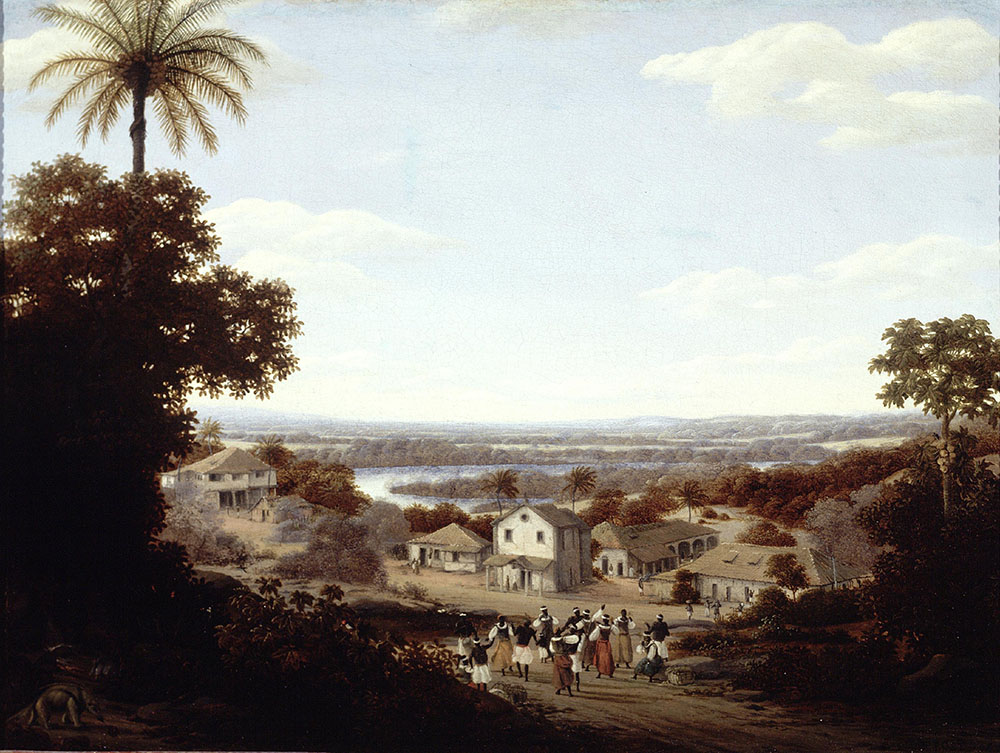
Brazilian Landscape was painted in 1665 by the Dutch artist Frans Post. Post was born in Haarlem in 1612 and died in the city of his birth in 1680. The landscape artist made his living by painting scenes like this one, which capitalized on a burgeoning demand for exoticized landscapes. Although this landscape is a fantastical one, it is likely that Post was working from sketches and studies from life, which he made while in Brazil (see below). Like many other Dutch artists, Post utilized various sketches to make composite paintings, joining multiple elements from disparate sources together to make a new whole. Thus, much of the same flora and fauna are recurrent in his work, repositioned to make perpetually unique compositions. Additionally, size, color, proportion and even the habitats of the animals and plants within his landscapes are often not accurate to living species; these paintings were never meant to be scientific documents. Like many artists, Post’s primary concern was his paintings’ artistic effects.
Frans Post was one of a very small group of artists that visited the Dutch colony of Brazil, seized from the Portuguese in the 1630s. In 1637, Prince Johan Maurits (1604-1679), cousin of the Prince of Orange and governor-general in Brazil, invited Post to accompany him on this colonial enterprise. From 1637 to 1644, Frans Post and his colleague, Albert Eckhout (c.1610-1665) documented the Dutch colony. Despite this, few of Post’s paintings actually made in the colony have been identified. About half of his extant work, mostly consisting of Brazilian landscapes, dates to the 1660s or later, long after his return to the Dutch Republic.
Among these is Brazilian Landscape, dated to 1665, more than twenty years after the artist’s return and eleven years after the Dutch colony reverted to Portuguese control. Once back in the Dutch Republic, Post painted to appeal to contemporary tastes. As his work gained popularity among people unfamiliar with Brazil, his landscapes became more idealized and more exotic. His South American animals and plants, like the anteater on the bottom left and the stylized palm trees, are one of many elements that are recurrent in his work. Creatures and plants like these, which were unfamiliar to his Dutch audience, provided an exotic emphasis to his work.
In this painting, Post portrays small African figures unshackled, wearing European clothing, and dancing on their way into town, a common theme in his landscapes. The Dutch colonies in Brazil were infamous, even among other South American colonies, for their inhumane treatment of African slaves. This scene is fantastically and disconcertingly unrealistic as all Africans within Dutch Brazil, aside from groups of escaped slaves hidden in the mountains, were enslaved and working on plantations. This depiction perhaps served as a form of propaganda, presenting an exoticized and yet idealized world to the Dutch populus. Ironically, the Portuguese recaptured Brazil in January of 1644, before many of these paintings were made. Nevertheless, Post’s artwork remains important in the history of Brazil as the oldest extant paintings of the country’s landscape.
